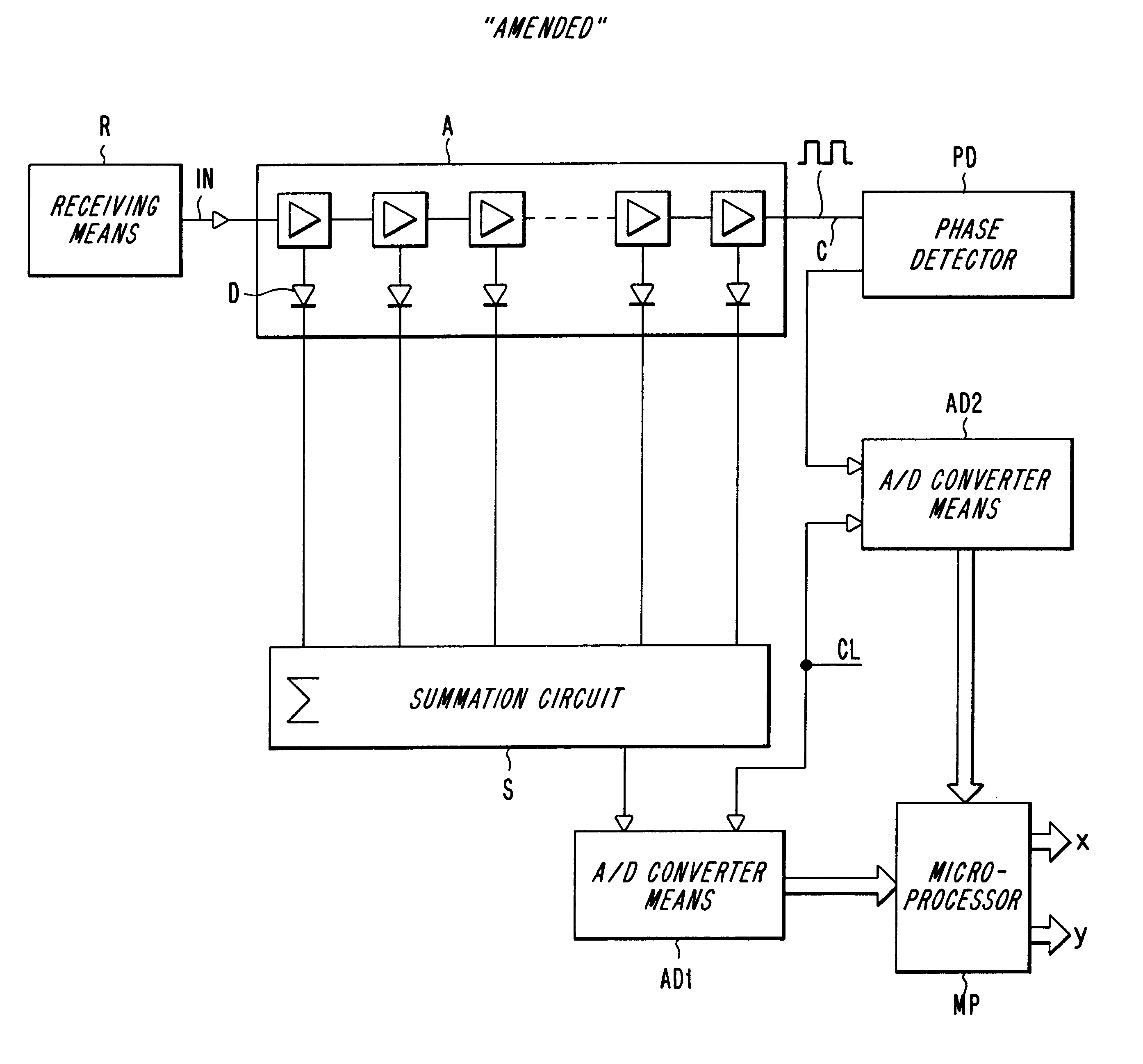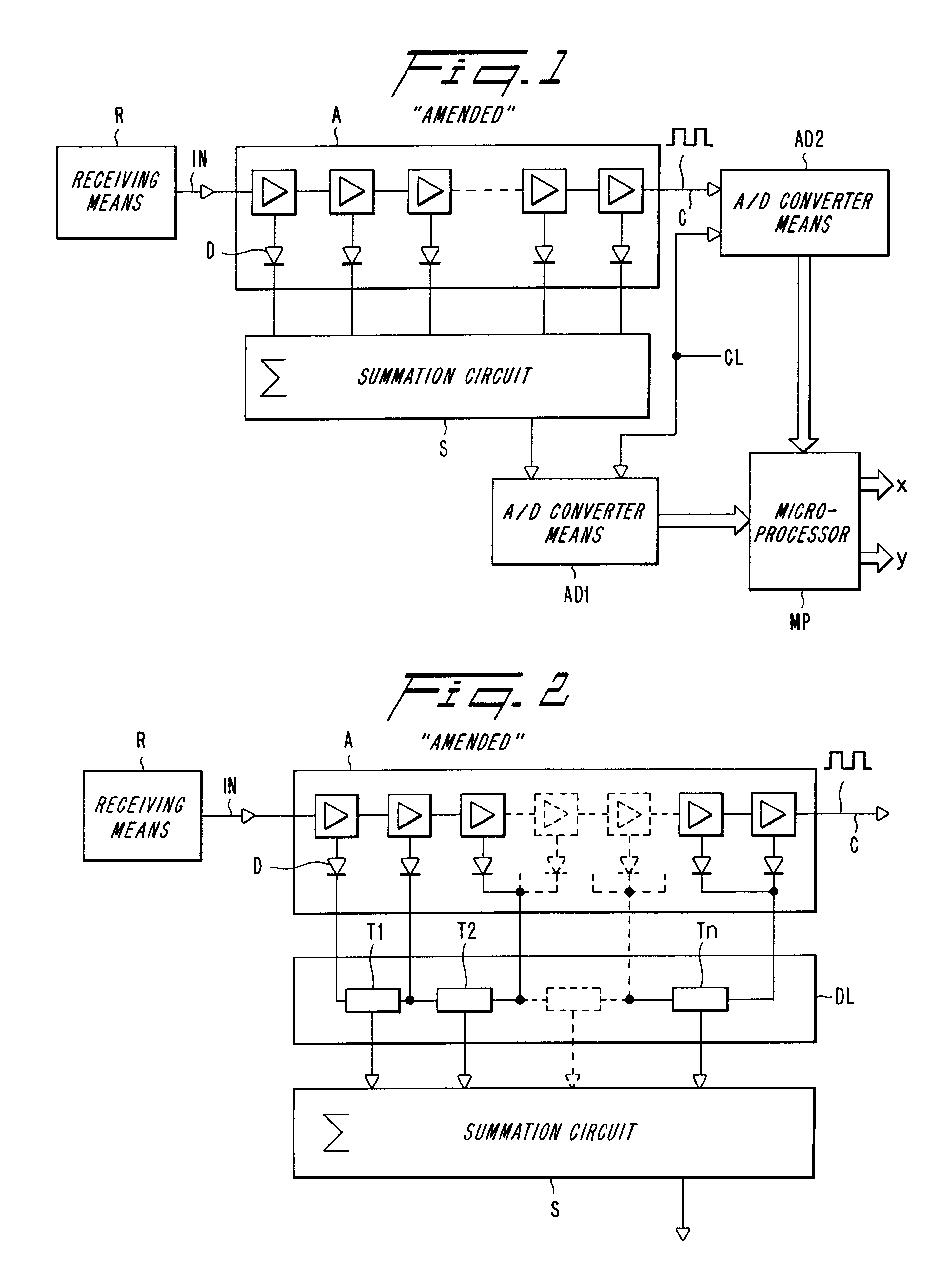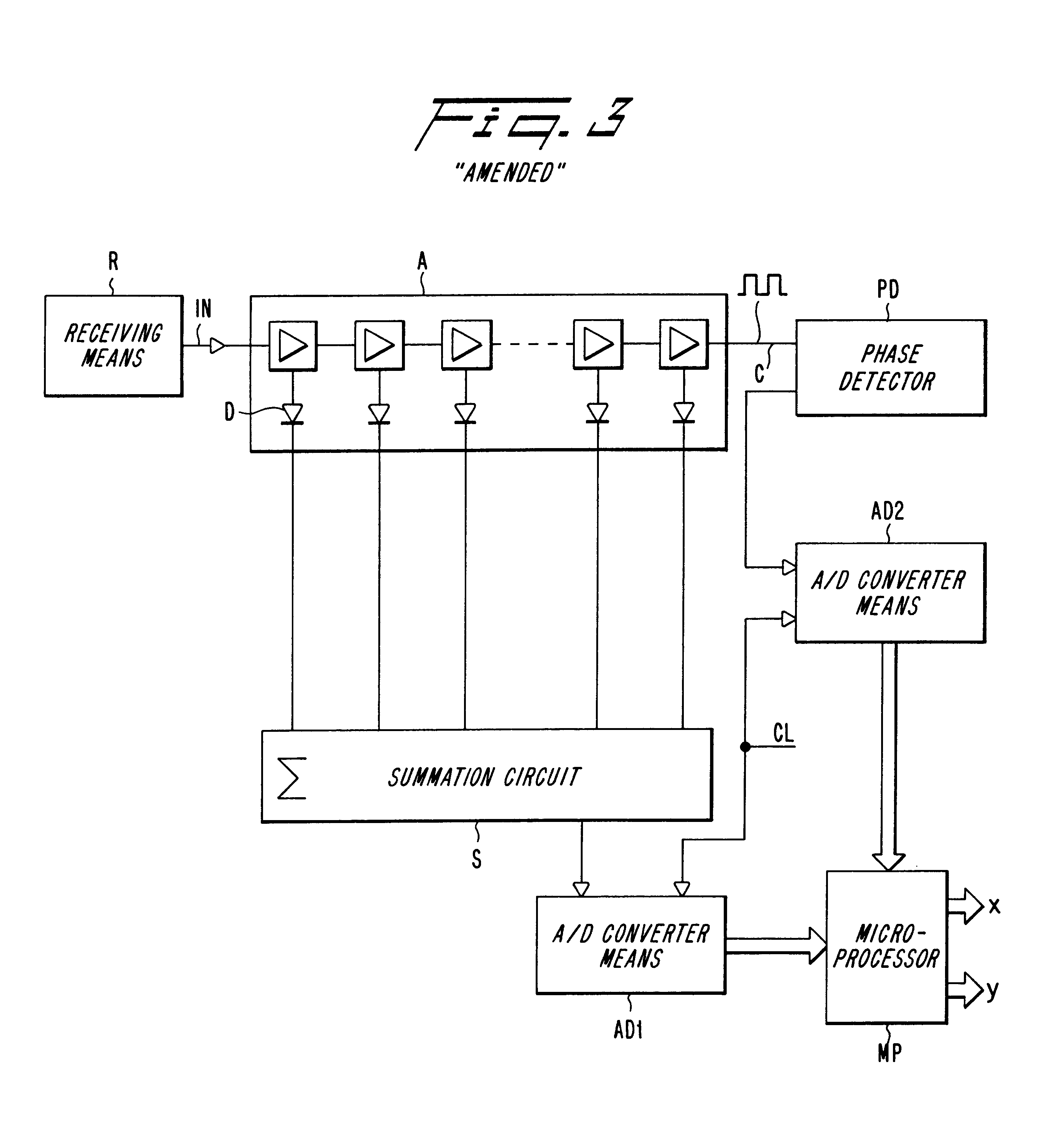Log-polar signal processing
a technology of log-polar signal and processing method, which is applied in the field of log-polar signal processing, can solve the problems of not being able to predict the level of amplification required, and being difficult to achieve the resolution of the a/d-conversion process, etc., and achieves low cost and high precision.
- Summary
- Abstract
- Description
- Claims
- Application Information
AI Technical Summary
Benefits of technology
Problems solved by technology
Method used
Image
Examples
Embodiment Construction
Described in the following is a novel method of digitalizing composite signals and an arrangement for carrying out the method. A complex number can be expressed either in cartesian (x,y) form or in polar (R, THETA) form. Translation between these two forms can be effected readily with the aid of the equations X=R cos (THETA); Y=R sin (THETA).
The log polar form (r, THETA) in which r=log (R) can be advantageously used as an alternative to the two forms aforesaid. The following transformation will then apply: (x,y)=exp(r+j THETA); (rl, THETA)=log(x,y).
These equations show that when having a value on the logarithm of the amplitude of the complex vector (r) and a value on the angle (THETA) of the complex vector, it is possible to restore the cartesian components of the complex vector when so desired.
The inventive digitalizing arrangement for complex signals having wide dynamic ranges utilizes the principle illustrated in FIG. 1. The signal to be processed is converted to an appropriate i...
PUM
 Login to View More
Login to View More Abstract
Description
Claims
Application Information
 Login to View More
Login to View More - R&D
- Intellectual Property
- Life Sciences
- Materials
- Tech Scout
- Unparalleled Data Quality
- Higher Quality Content
- 60% Fewer Hallucinations
Browse by: Latest US Patents, China's latest patents, Technical Efficacy Thesaurus, Application Domain, Technology Topic, Popular Technical Reports.
© 2025 PatSnap. All rights reserved.Legal|Privacy policy|Modern Slavery Act Transparency Statement|Sitemap|About US| Contact US: help@patsnap.com



